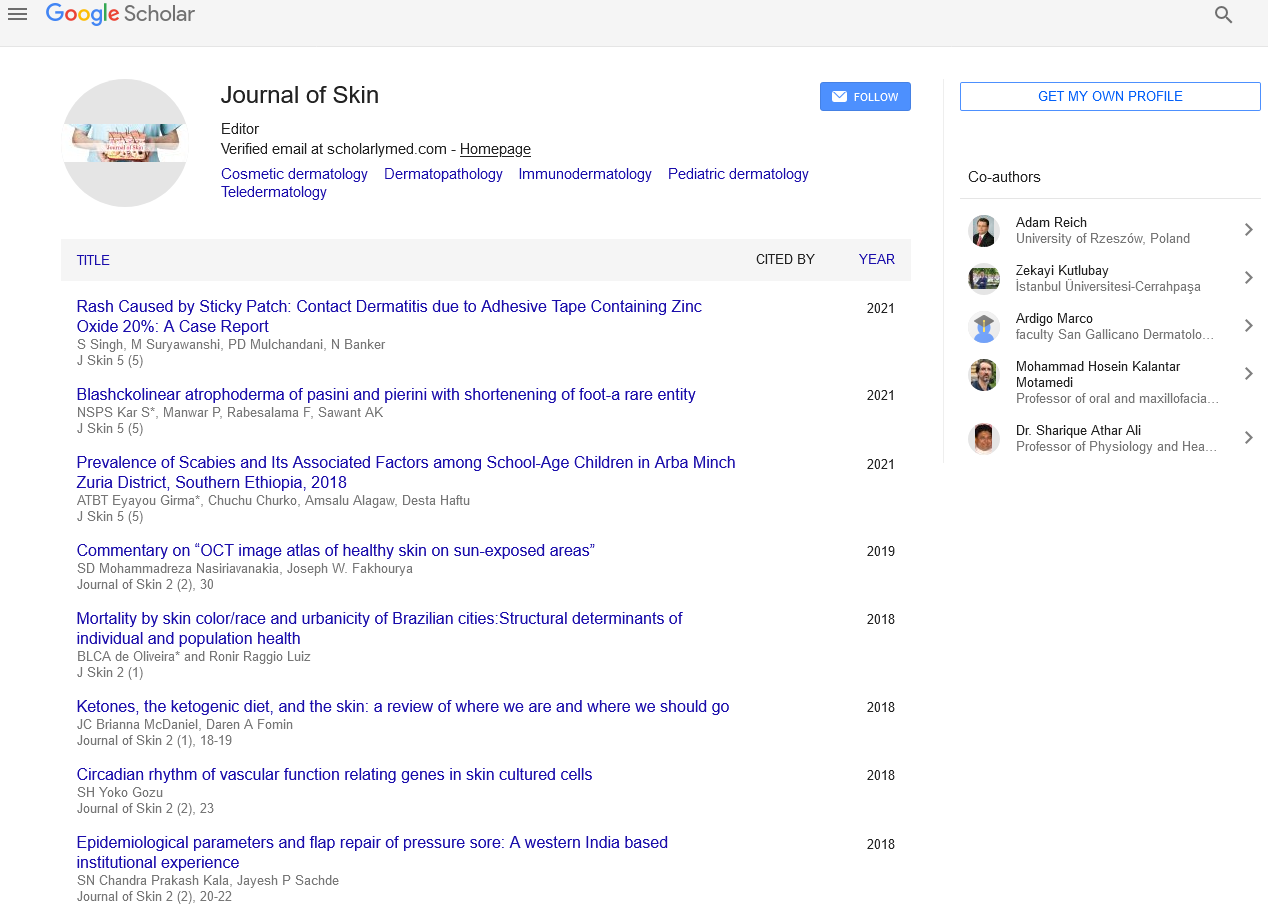
Sign up for email alert when new content gets added: Sign up
Abstract
Vaccines Summit 2020: The immunology of tuberculosis- Sudha BansodeShankarrao Mohite College, India
Author(s): Sudha BansodeVaccines Summit 2019: The immunology of tuberculosis- Sudha BansodeShankarrao Mohite College, India Sudha Bansode Shankarrao Mohite College, India Tuberculosis (TB) is one of the commonest genuine irresistible overall sickness, is one of the commonest reasons for genuine respiratory inability and torments right around 10 million individuals every year. The illness, fuelled by HIV contamination and destitution, is wild in Africa. Medication safe TB compromises to destabilize TB control in a few different locales of the world. Albeit a few elements including HIV contamination and financial hardship encourage the improvement of TB, contributing components incorporate problematic indicative instruments, absence of modest and viable new restorative mediations and the absence of a broadly accessible powerful antibody. MTB ranks as the second leading cause of death from a single infectious agent, after the human immunodeficiency virus (HIV). Indeed, about 8.7 million incident cases of pulmonary tuberculosis (TB) (range, 8.3 million to 9 million), equivalent to 125 cases per 100,000 population, were registered globally in 2011.1 Despite availability of antituberculous drugs for the last 50 years is responsible for 1.5 million deaths every year with about one third of the world population having been in contact and latently infected. Notwithstanding, a superior comprehension of the invulnerable pathogenesis of TB can drive the advancement of new immunodiagnostic apparatuses, quicken and encourage the assessment of new helpful intercessions and is imperative to the improvement of a successful antibody. There have been a few astounding distributed audits on the immunology of TB.3-7 Here, nonetheless, we will refres on the most recent new advancements in the field and, specifically, center around clinically significant and translational parts of TB immunology. It has been recommended that the advancement of TB is because of disappointment of safe control or improper resistant direction. In addition, a great part of the lung harm related with TB is have intervened safe pathology instead of because of M. tuberculosis-inferred harmfulness factors. The unsettling influence in insusceptible control may hypothetically include the disruption of a defensive Th1 reaction, including the age of CD8+ CTL, by a few systems including Th2-like cytokines, TGF-β, Treg or other administrative cells, and up to this point undescribed instruments harassing the downstream defensive Th1 pathways. The perception that those with dynamic TB require a half year of treatment regardless of practically 95% of the bacterial sanitization happening inside the initial 2 weeks of treatment has never tastefully been clarified. In this way, increasingly powerful treatment may require regulation of the safe framework and a change far from an immunopathologic phenotype to a defensive one. Reestablishing this immunoregulatory parity may take a while. Endeavors to reestablish mycobactericidal resistance with IL-2 and IFN-γ have been baffling. Operators, for example, steroids, thalidomide and TNF-α enemies have additionally been contemplated. It is theorized that immunomodulatory specialists may drive a proper Th1 reaction while simultaneously killing on or the fitting administrative cells. For instance, M. vaccae may drive a Th1 reaction and CD8+ CTL yet at a similar turn on CD25CD45Rblow Treg cells. Notwithstanding, clinical preliminaries of M. vaccae have been frustrating. It has been proposed that this disappointment might be identified with the organization of a solitary instead of different portions, which is utilized with accomplishment in China. An ongoing investigation of various portion M. vaccae in HIV-tainted African members, and distributed in theoretical structure, showed a decrease in mycobacteraemia in the intercession gathering. In a murine model IVIG was appeared to significantly enhance mycobacterial disinfection however there are no human information. There are a few captivating primer reports, including little quantities of patients, that a restrictive concentrate of a few plants from the Ukraine (Immunoxel) might be related with enhanced results in medication delicate and tranquilize safe TB. A few other potential immunomodulatory specialists including Mycobacterium w, DNA antibody encoding HSP65 of M. leprae, HE2000, RUTI, SCV-07 SciCLone, hostile to IL-4 and GM-CSF are depicted in Table, and checked on in detail in Churchyard et al. The estimation of these immunomodulatory operators stay indistinct and very much led forthcoming clinical preliminaries are required to clear up their utility for routine use. The development of broadly tranquilize safe TB had strengthened the earnestness for these investigations to be led. An increasingly focused picture of the early events leading to disease progression or establishment of latency has been provided in recent years by the investigation of innate immune mechanism(s) involving macrophages, neutrophils, DCs and NK cells, by the development of advanced animal models and by translational research in human disease addressing key questions on immune correlates of M. tuberculosis infection. All the components of innate immune responses provide relevant contributions to the control of M. tuberculosis by antigen-specific adaptive T cell responses. The knowledge of these mechanism(s) will allow future development of vaccination strategies, monitoring of vaccine efficacy in selected individuals with specific innate immune response patterns, and in the identification of the minority of latently infected individuals who will develop reactivation post-primary disease. This work is partly presented at International Conference on Vaccines and Immunization March 21-22, 2020 held at Rome, Italy




